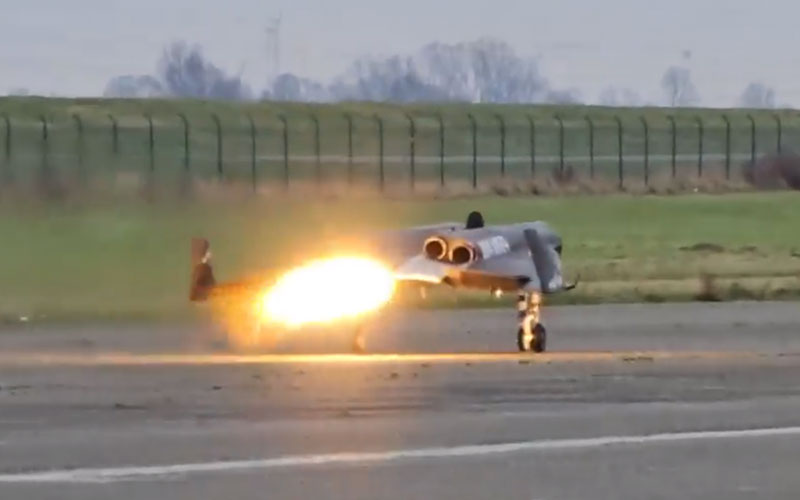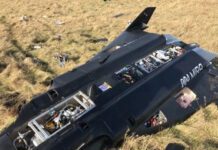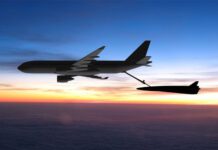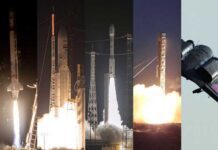
German startup POLARIS Spaceplanes has completed the first rocket-powered roll test of its MIRA demonstrator.
MIRA is 4.25 metres long and is equipped with four kerosene-fed turbine engines and one of the company’s AS-1 LOX/kerosene linear aerospike engines, which is designed to produce 1kN of thrust. Testing of the vehicle under the power of its turbine engines began on 26 October with an initial 2.5-minute flight. Following this initial flight test campaign, POLARIS began working towards the first test flight powered by its aerospike engine.
The company test fired its AS-1 engine for the first time in mid-December. Since then, it has completed a total of 23 hot fire tests of the engine, with POLARIS noting that the engine produced more thrust than initially anticipated. It did, however, not give any specific figures.
Earlier today, POLARIS announced that it had completed the first MIRA roll test powered by the aerospike engine. The test was conducted at Lemwerder Airfield near Bremen in Germany. During the roll test, the aerospike engine was fired for just three seconds at 60% thrust. The vehicle’s safety system then automatically vented the remaining oxygen enabling ground crews to safely approach it following the conclusion of the test.
According to POLARIS, the company is working towards a maiden rocket-powered MIRA flight this month.
MIRA is the fifth vehicle that POLARIS has built and tested. The lessons learned from these prototypes will be used in the development of the company’s multipurpose spaceplane and hypersonic transport system, AURORA. Once operational, AURORA will be capable of delivering up to 1,000 kilograms into low Earth orbit with the aid of an expendable upper stage.







